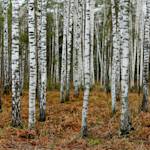Carpathian Montane Forests
2023 CE • Central and Eastern Europe
"An alluring wilderness of boundless forests and lustrous lakes, the Carpathian Mountains are one of the richest cultural and ecological landscapes in Europe. Precipitous slopes and deep valleys are verdant with over a third of all European plant species, whilst treetops are graced by imperial and golden eagles. Furthermore, this is a bastion for Europe’s largest carnivores: the mountains are the last refuge on the continent for viable populations of brown bear, Eurasian lynx, and grey wolf . . . Oak dominated foothills give way to montane forests of European beech, silver fir, Norway spruce, and sycamore, though pure beech stands are not uncommon. Above the timberline, mountain pine, dwarf juniper, and green alder form dense thickets. Lush alpine meadows abound in the high mountain zone, where numerous lakes lie within cirques and glacial valleys. This region is a vital watershed, feeding the major rivers of Central Europe . . . The Carpathians are a stronghold for large carnivores in Europe, harboring around 3,500 grey wolves, 2,400 Eurasian lynx, and more than 8,000 brown bears; all of these populations are stable. Additionally, the forests and grasslands are a sanctuary for threatened bird species such as imperial eagle, Ural owl, black grouse, and corncrake . . . In the 20th century, industrial expansion caused severe air and water pollution, significantly damaging forests due to sulphur emissions and acid rain; resulting forest decline is ongoing due to the long-lasting impacts of heavy metals. Recent decades have seen a rapid increase in the development of large tourist centers and ski resorts, particularly in protected areas. Mass tourism also favors the introduction of invasive species, and the invasive grass Poa annua is known to occur alongside tourist trails. Furthermore, the Eastern Carpathians in Romania and Ukraine are still threatened by clear-cutting of near-natural forest."
"Carpathian Montane Forests," One Earth.
Image: spoilt.exile via Flickr, Attribution-ShareAlike 2.0 Generic (CC BY-SA 2.0)


Learn about Maya Lin’s fifth and final memorial: a multi-platform science based artwork that presents an ecological history of our world - past, present, and future.

Discover ecological histories and stories of former abundance, loss, and recovery on the map of memory.

Learn how we can reduce our emissions and protect and restore species and habitats – around the world.

See how art can help us rethink the problems we face, and give us hope that each one of us can make a difference.

Help make a global memorial something personal and close to home. Share your stories of the natural world.


